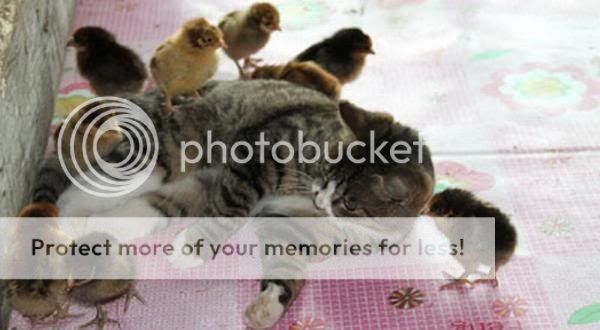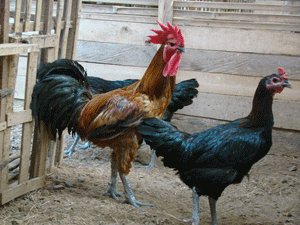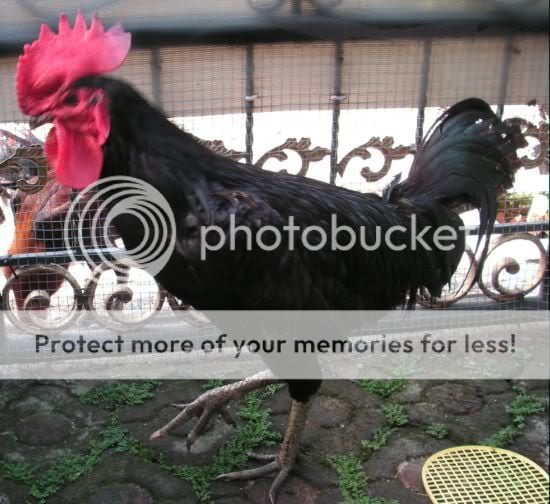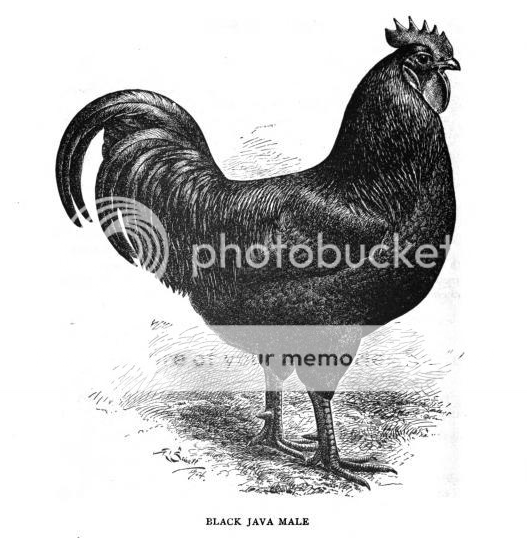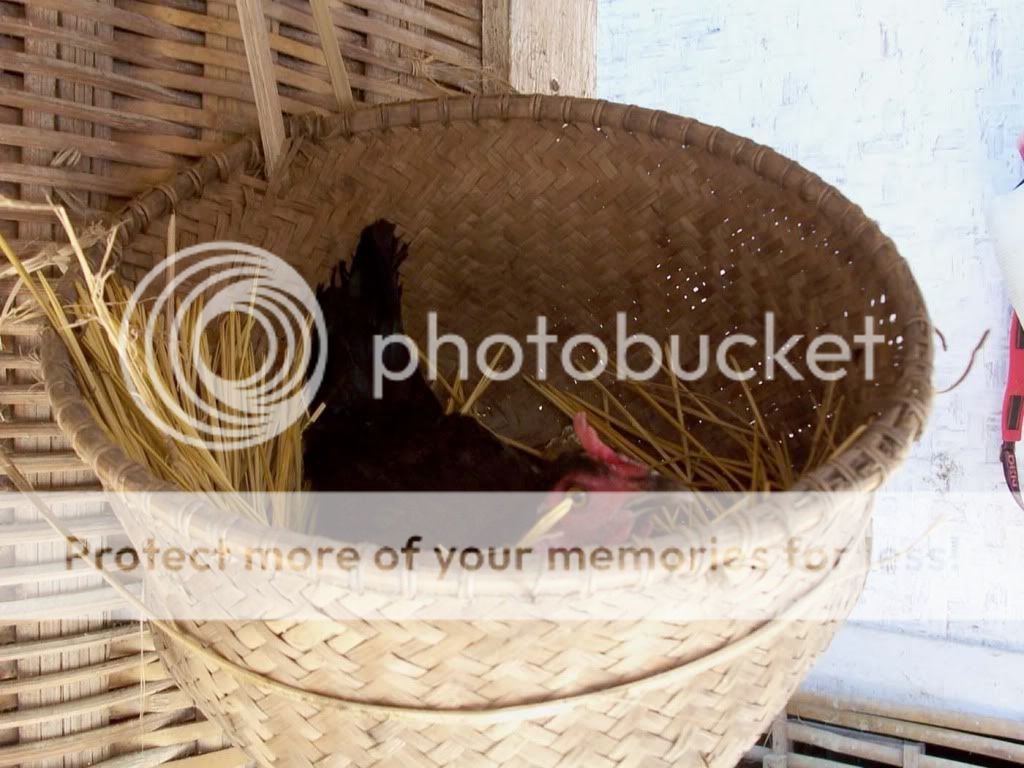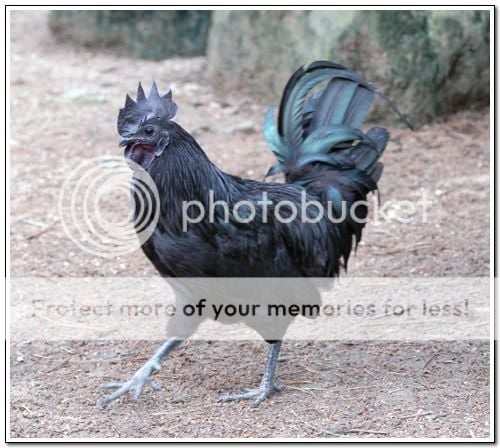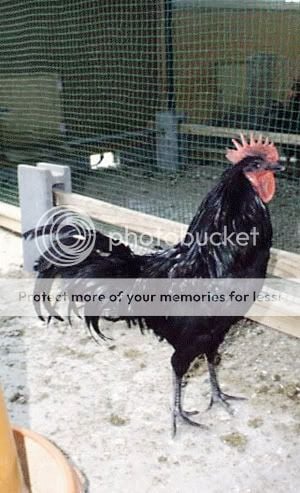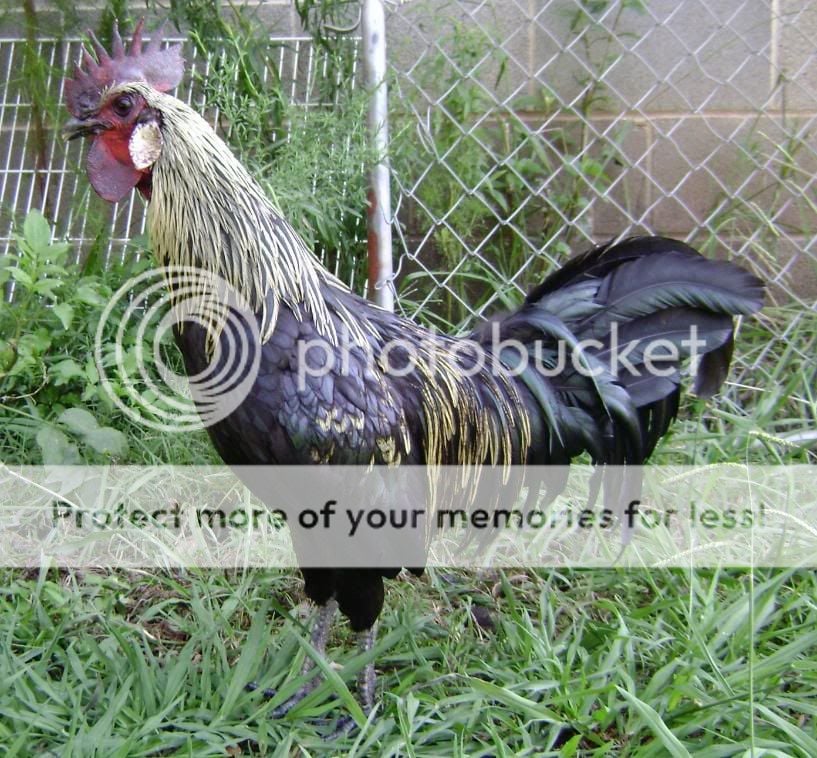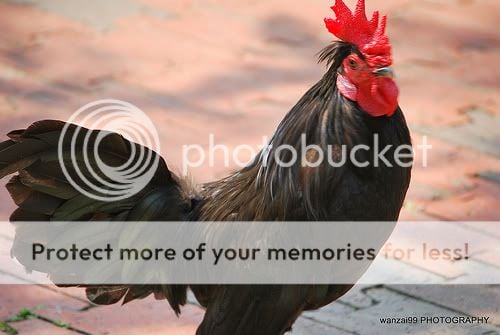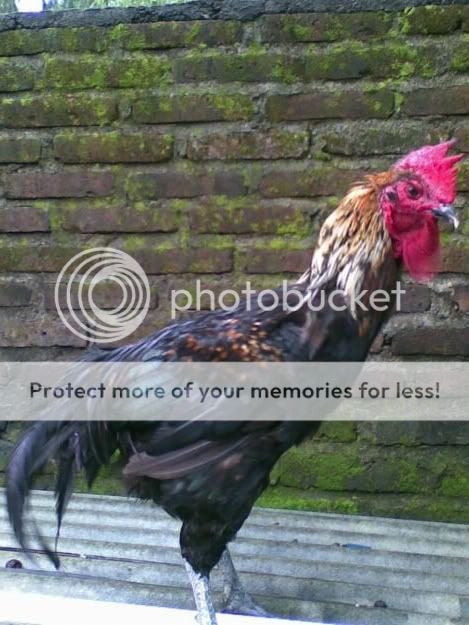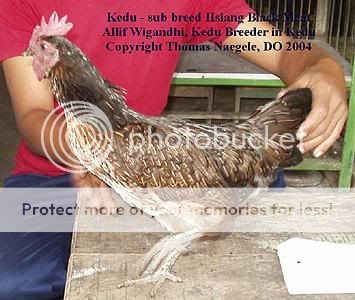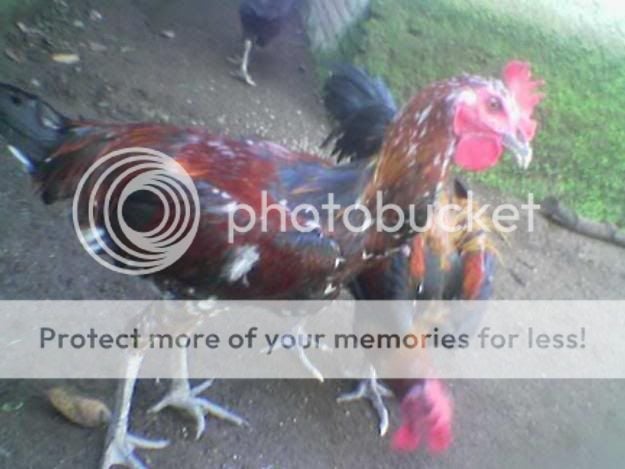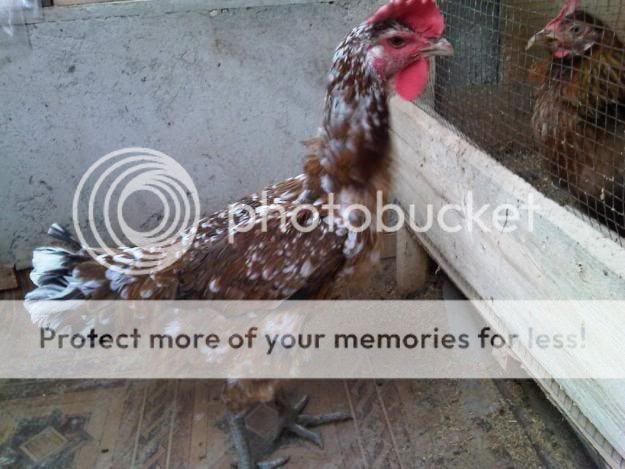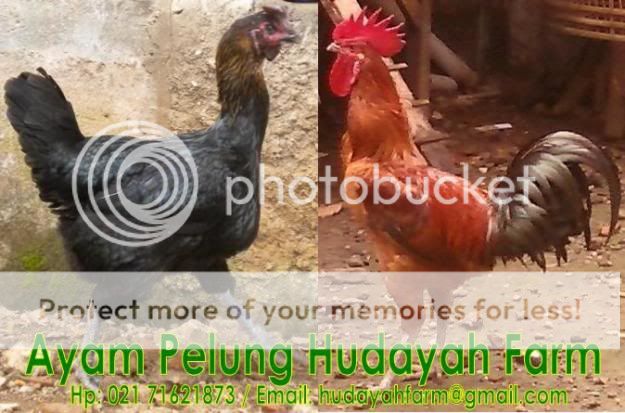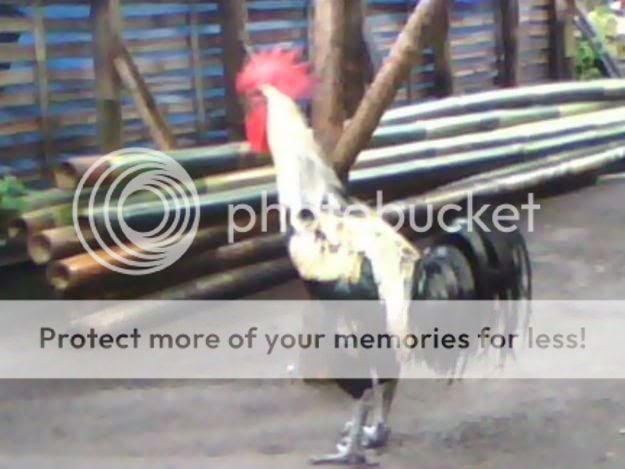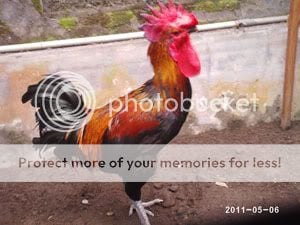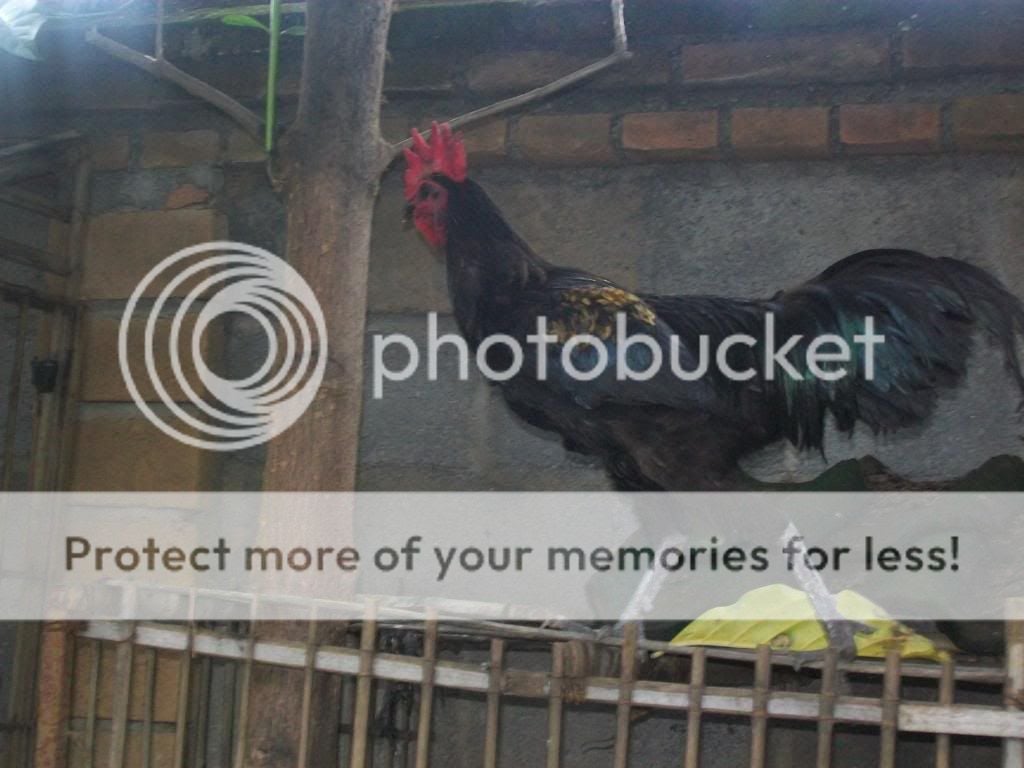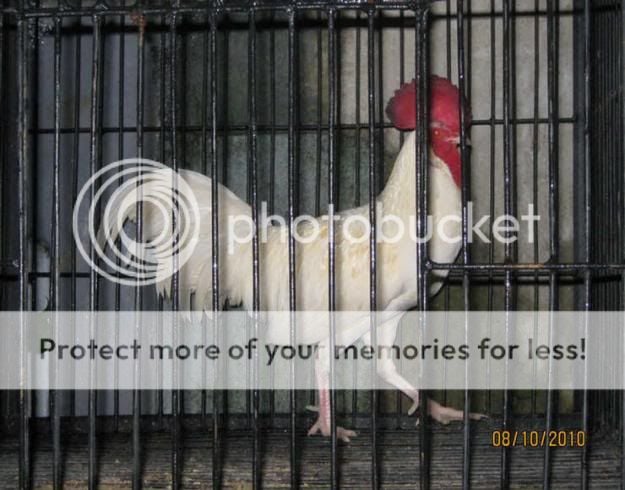Sorry to take so long to respond.
1. The Cemani is not a breed per se. It is a morph or mutation that arises from Ayam Kedu and other uniquely Indonesian landrace type breeds.
Given the high value placed on the morph, it certainly has been the focus of a great deal attention by Indonesian selectionist poultiers.
I'll try and follow up with this post -extrapolate- on what I'm learning about what it is that constitutes a "breed" in ancient countries where chickens have been domesticated for at least ten thousand years, versus a few hundred years. We need to realise that westerners received a very different sort of domestic stock than what one deals with in some eastern country where the greater percentage of the entire history of the domestication event, and subsequent refinements has taken place.
Generally speaking, relatively small populations of chickens arrived in Europe at any given time. Consequently, advancements in selective breeding was enabled by relative genetic homogeneity- that is- it took a short time to arrive at genetic homogeneity in European populations under the attention of poultiers there. European birds have traditionally been kept in enclosures that protect them against inclement weather and predators- freezing temperatures. There are no wild junglefowl in the forests adjacent to villages and random hybrid roosters don't often show up and cross pollinate as it were, every hen in the vicinity...
Conversely, domestic fowl in Asia have triple the number of predators and a very different set of conditions including captive environments to deal with.
In Western countries we think of breeds as set varieties that invariably produce more of the same. It's difficult for us to comprehend the intrinsic value of land races.
That doesn't mean a land race can't be select bred into something we consider an established domestic breed but it's important to understand what factors are in place.
In this instance, I've taken imported land race stock and went to the process of select breeding to establish a subbreed that can be depended upon to produce more of the same. I'm not a hereditary geneticist and do not have more than a grasp of much of what a good number of contributors here are keenly aware. What i do comprehend is something about the molecular makeup of the focal stock and selective breeding strategies that hereditary geneticists have established in the maintenance and refinement of specific mutations.
To be clear, my stock are derived of a composite between Ayam Kedu Hsiang subbreed, Ayam Kedu Cemani subbreed and Ayam Kedu Bali a bantam breed that tends to produce more Cemani morph than the larger stock but is too small for ceremonial and meat production purposes.
2. Every chick hatched from Cemani parents is not phenotypically like its parents. It may be Hsiang ( similar to "partridge"), pearl, white or black with pink bones rather than black. Some local strains of the Kedu produce a higher percentage of the cemani morph than others, with some poultiers being celebrated for their stock. This likely comes down to a specific bird or birds that throws this mutation consistently. As soon as that bird passes on, the poultier is often at a loss attempting to replicate or replace prior successes at producing the morph.
Breeding related cemani interse, that is sibling to sibling or father to daughter, will often produce a higher percentage of the black boned morph. However, it should be noted clearly that even over a few generations, breeding genetically related cemani morphs together produces some significant % of frizzled silky mutants. These specimens tend to not thrive. Breeding these related frizzled silky cemani mutants together for more generations produces some percentage of birds expressing polydactylism. The inbreeding is not necessarily the origin of the extra digits but increasing the % of specific mutations linked with the condition seem to increase it.
3. The Ayam Kedu is equally Dutch as Indonesian in origin. Ayam Kedu during the Dutch hegemony of the Indonesian island of Java , could be defined as Nieuwe Bataafse or New Batavia. Ayam Kedu earns its name from the region of Kedu Plain Java Indonesia. . Indonesian serf under the administrative powers of Dutch landholders, developed large-bodied, dual purpose fowl under mandate of the Dutch to provide white eggs and succulent pink meat for the European colonialist. By necessity, these composite fowl had to be able to thrive in Indonesian environmental conditions while also being highly productive. They managed this by recombining Mediterranean breeds ( carried by the Dutch to Indonesia) and crossing these consistent egg and meat producers with native Indonesian landraces that thrived in Indonesian climatic conditions. The region of Kedu Plain was of particular strategic militarily significance to the Dutch East Indies company.
It should be remembered that eggs were not as significant in the Indonesian diet as they were by Dutch colonialists that did not favor the salty fish paste Indonesians are so fond. During the Dutch period, populations of Chinese ethnics grew exponentially and so the market for chicken meat grew exponentially as well.
Recap:
The Kedu region was very significant over the entire span of Indonesian history.
Before the Dutch arrived, Kedu Plain was the centre of Javanese culture.
Chickens are a huge part of Indonesian culture. This did not change upon the arrival of Dutch colonialism. If anything chicken production increased during this period and many strains of well-established, traditionally Indonesian breeds became modified or "improved" to meet the demands of new, ever-burgeoning populations of foreign residents ( Dutch, English, Chinese ethnics and etc.).
This equally Dutch and Indonesian Ayam Kedu "New Batavian" would come to be a very significant- go to dual purpose breed -which it continues to be to this day.
Eventually, the Dutch would built Jakarta, which was the home of Dutch Colonial rule throughout Indonesia.
They knew the city of Jarkarta as Bataafse Republiek AKA Batavian Republic The Batavian Republic (Dutch: Bataafse Republiek) was the successor of the Republic of the United Netherlands. It was from Batavia that Dutch ships laden with Indonesian goods were launched. Thusly, the Ayam Kedu came to be associated with New Batavia in much the same way as many diminutive breeds are associated with the Port of Bantam,( also in Java Indonesia).
Indonesians refer to this land race as the Ayam Kedu because it was originally generated in and around the Kedu Plain. But ex patriots living in Indonesia, Guyana, Barbados and etc. call the large black kedu subbreed as New Batavian.
4. The New Batavian fowl was an integral progenitor of some of our most important American chicken breeds. New Batavians first started to appear in the American south in the early 1800's. That phase of the landrace was probably, to some degree, phenotypically different from the next generation. The first generation may have been a bit more Indonesian, more game fowl than Mediterranean by the nature of trade at the point in history. Gamecocks were big business and anything from the Spice Islands was considered of the highest and most exotically mysterious quality. This well-designed then New-Heritage breed was particularly well-suited for life on plantation in the Dutch West Indies. The second phase of the New Batavian was likely a much more established dual purpose breed by the time Dutch Colonialists made their first major exodus from Indonesia, settling in the rural United States where they contributed a great deal to American agriculture, including poultry farming.
We should be clear here that this was the large black Ayam Kedu that arrived, not the Cemani. There would have been very little interest in black-boned fowl at this point in colonialist history. White or pink flesh was desired and large white eggs. Mediterranean stock recombined with Indonesian gamecock and Chinese chicken breeds arriving from the Gulf of Tonkin were at the foundation of the Kedu stock that arrived here in the USA and it was select bred from that point to the market and aesthetic of the American.
Once well refined and introduced to the United States, the New Batavia/Ayam Kedu would be further developed as the Black Java.
5. The Cemani is a further refinement of the Kedu.
While Dutch, English and North Americans were developing the New Batavian Java, to become the most important meat breed of its time, Indonesians were artificially selecting for something radically different. They were selecting for black bones and brown eggs. I'll follow up in my next post about the diversity of traditional Indonesian chicken breeds and how their continuing and dynamic refinement of native land races differs from that of European enterprise driven selective breeding.
1. The Cemani is not a breed per se. It is a morph or mutation that arises from Ayam Kedu and other uniquely Indonesian landrace type breeds.
Given the high value placed on the morph, it certainly has been the focus of a great deal attention by Indonesian selectionist poultiers.
I'll try and follow up with this post -extrapolate- on what I'm learning about what it is that constitutes a "breed" in ancient countries where chickens have been domesticated for at least ten thousand years, versus a few hundred years. We need to realise that westerners received a very different sort of domestic stock than what one deals with in some eastern country where the greater percentage of the entire history of the domestication event, and subsequent refinements has taken place.
Generally speaking, relatively small populations of chickens arrived in Europe at any given time. Consequently, advancements in selective breeding was enabled by relative genetic homogeneity- that is- it took a short time to arrive at genetic homogeneity in European populations under the attention of poultiers there. European birds have traditionally been kept in enclosures that protect them against inclement weather and predators- freezing temperatures. There are no wild junglefowl in the forests adjacent to villages and random hybrid roosters don't often show up and cross pollinate as it were, every hen in the vicinity...
Conversely, domestic fowl in Asia have triple the number of predators and a very different set of conditions including captive environments to deal with.
In Western countries we think of breeds as set varieties that invariably produce more of the same. It's difficult for us to comprehend the intrinsic value of land races.
That doesn't mean a land race can't be select bred into something we consider an established domestic breed but it's important to understand what factors are in place.
In this instance, I've taken imported land race stock and went to the process of select breeding to establish a subbreed that can be depended upon to produce more of the same. I'm not a hereditary geneticist and do not have more than a grasp of much of what a good number of contributors here are keenly aware. What i do comprehend is something about the molecular makeup of the focal stock and selective breeding strategies that hereditary geneticists have established in the maintenance and refinement of specific mutations.
To be clear, my stock are derived of a composite between Ayam Kedu Hsiang subbreed, Ayam Kedu Cemani subbreed and Ayam Kedu Bali a bantam breed that tends to produce more Cemani morph than the larger stock but is too small for ceremonial and meat production purposes.
2. Every chick hatched from Cemani parents is not phenotypically like its parents. It may be Hsiang ( similar to "partridge"), pearl, white or black with pink bones rather than black. Some local strains of the Kedu produce a higher percentage of the cemani morph than others, with some poultiers being celebrated for their stock. This likely comes down to a specific bird or birds that throws this mutation consistently. As soon as that bird passes on, the poultier is often at a loss attempting to replicate or replace prior successes at producing the morph.
Breeding related cemani interse, that is sibling to sibling or father to daughter, will often produce a higher percentage of the black boned morph. However, it should be noted clearly that even over a few generations, breeding genetically related cemani morphs together produces some significant % of frizzled silky mutants. These specimens tend to not thrive. Breeding these related frizzled silky cemani mutants together for more generations produces some percentage of birds expressing polydactylism. The inbreeding is not necessarily the origin of the extra digits but increasing the % of specific mutations linked with the condition seem to increase it.
3. The Ayam Kedu is equally Dutch as Indonesian in origin. Ayam Kedu during the Dutch hegemony of the Indonesian island of Java , could be defined as Nieuwe Bataafse or New Batavia. Ayam Kedu earns its name from the region of Kedu Plain Java Indonesia. . Indonesian serf under the administrative powers of Dutch landholders, developed large-bodied, dual purpose fowl under mandate of the Dutch to provide white eggs and succulent pink meat for the European colonialist. By necessity, these composite fowl had to be able to thrive in Indonesian environmental conditions while also being highly productive. They managed this by recombining Mediterranean breeds ( carried by the Dutch to Indonesia) and crossing these consistent egg and meat producers with native Indonesian landraces that thrived in Indonesian climatic conditions. The region of Kedu Plain was of particular strategic militarily significance to the Dutch East Indies company.
It should be remembered that eggs were not as significant in the Indonesian diet as they were by Dutch colonialists that did not favor the salty fish paste Indonesians are so fond. During the Dutch period, populations of Chinese ethnics grew exponentially and so the market for chicken meat grew exponentially as well.
Recap:
The Kedu region was very significant over the entire span of Indonesian history.
Before the Dutch arrived, Kedu Plain was the centre of Javanese culture.
Chickens are a huge part of Indonesian culture. This did not change upon the arrival of Dutch colonialism. If anything chicken production increased during this period and many strains of well-established, traditionally Indonesian breeds became modified or "improved" to meet the demands of new, ever-burgeoning populations of foreign residents ( Dutch, English, Chinese ethnics and etc.).
This equally Dutch and Indonesian Ayam Kedu "New Batavian" would come to be a very significant- go to dual purpose breed -which it continues to be to this day.
Eventually, the Dutch would built Jakarta, which was the home of Dutch Colonial rule throughout Indonesia.
They knew the city of Jarkarta as Bataafse Republiek AKA Batavian Republic The Batavian Republic (Dutch: Bataafse Republiek) was the successor of the Republic of the United Netherlands. It was from Batavia that Dutch ships laden with Indonesian goods were launched. Thusly, the Ayam Kedu came to be associated with New Batavia in much the same way as many diminutive breeds are associated with the Port of Bantam,( also in Java Indonesia).
Indonesians refer to this land race as the Ayam Kedu because it was originally generated in and around the Kedu Plain. But ex patriots living in Indonesia, Guyana, Barbados and etc. call the large black kedu subbreed as New Batavian.
4. The New Batavian fowl was an integral progenitor of some of our most important American chicken breeds. New Batavians first started to appear in the American south in the early 1800's. That phase of the landrace was probably, to some degree, phenotypically different from the next generation. The first generation may have been a bit more Indonesian, more game fowl than Mediterranean by the nature of trade at the point in history. Gamecocks were big business and anything from the Spice Islands was considered of the highest and most exotically mysterious quality. This well-designed then New-Heritage breed was particularly well-suited for life on plantation in the Dutch West Indies. The second phase of the New Batavian was likely a much more established dual purpose breed by the time Dutch Colonialists made their first major exodus from Indonesia, settling in the rural United States where they contributed a great deal to American agriculture, including poultry farming.
We should be clear here that this was the large black Ayam Kedu that arrived, not the Cemani. There would have been very little interest in black-boned fowl at this point in colonialist history. White or pink flesh was desired and large white eggs. Mediterranean stock recombined with Indonesian gamecock and Chinese chicken breeds arriving from the Gulf of Tonkin were at the foundation of the Kedu stock that arrived here in the USA and it was select bred from that point to the market and aesthetic of the American.
Once well refined and introduced to the United States, the New Batavia/Ayam Kedu would be further developed as the Black Java.
5. The Cemani is a further refinement of the Kedu.
While Dutch, English and North Americans were developing the New Batavian Java, to become the most important meat breed of its time, Indonesians were artificially selecting for something radically different. They were selecting for black bones and brown eggs. I'll follow up in my next post about the diversity of traditional Indonesian chicken breeds and how their continuing and dynamic refinement of native land races differs from that of European enterprise driven selective breeding.

